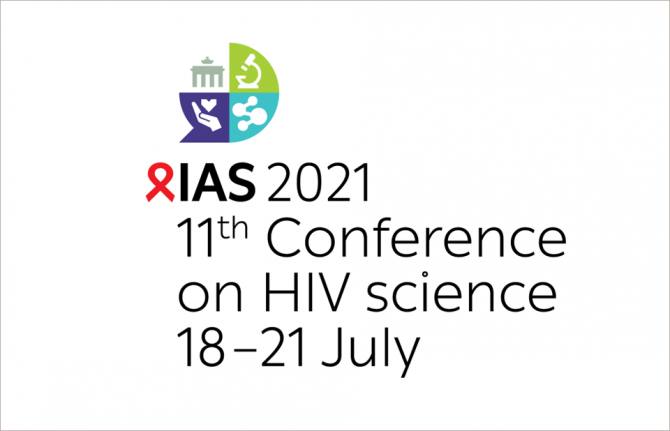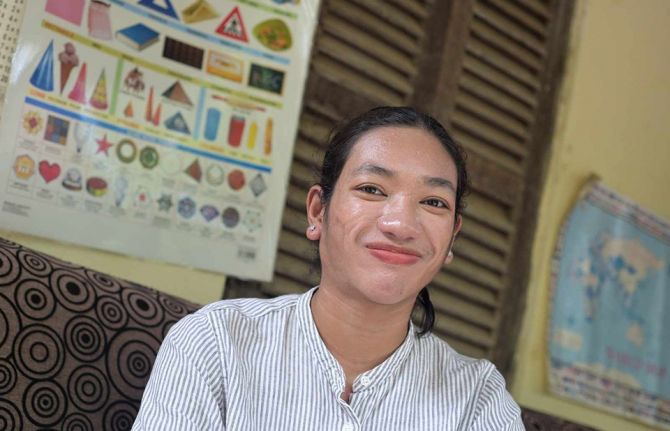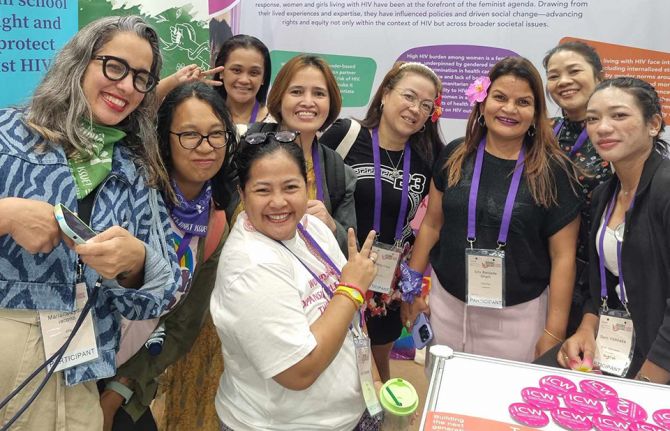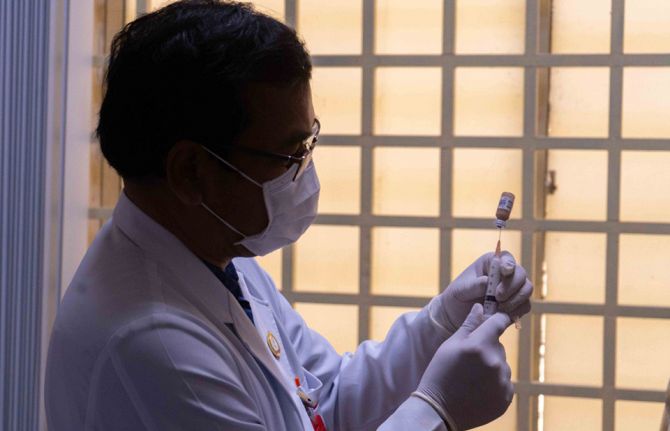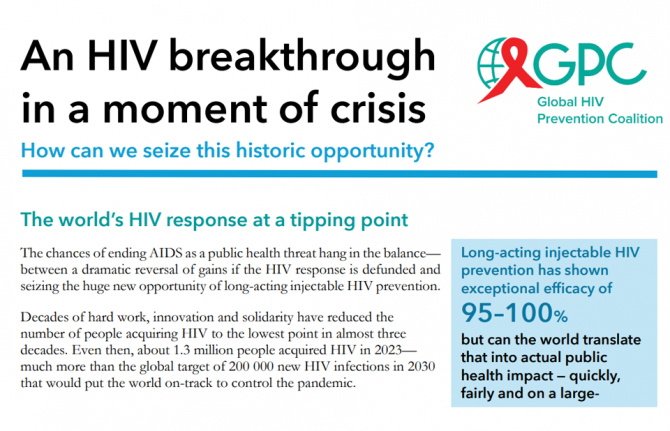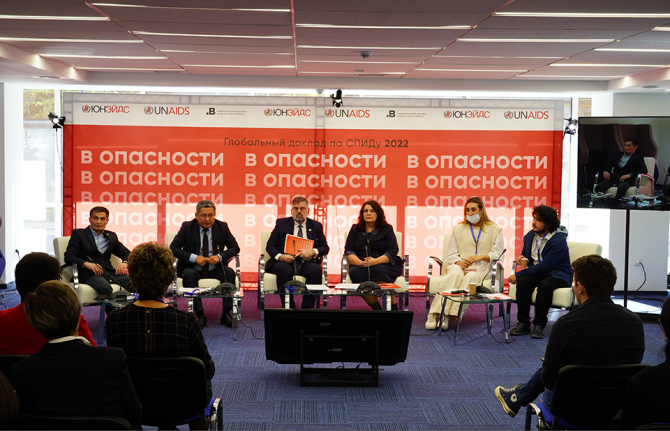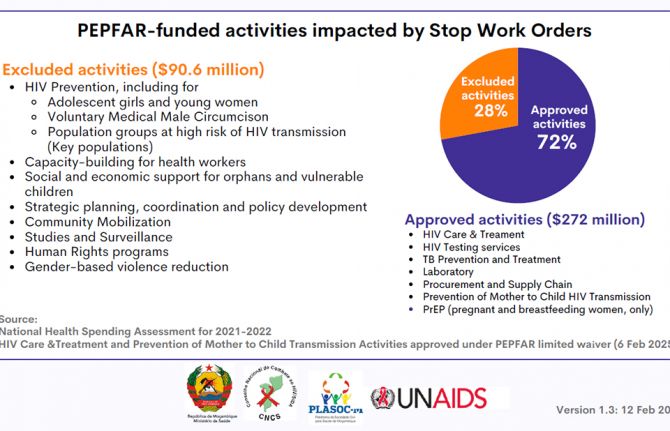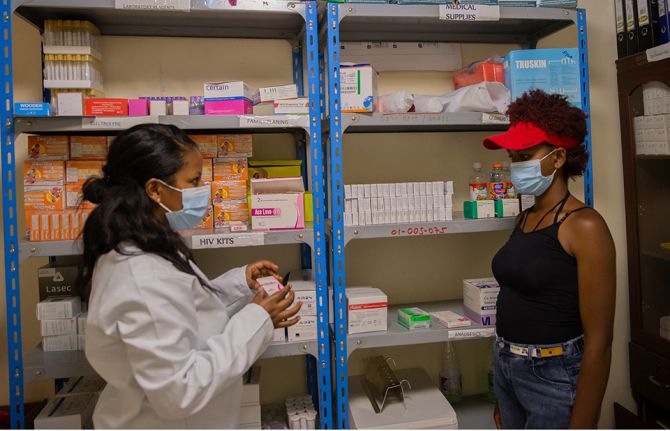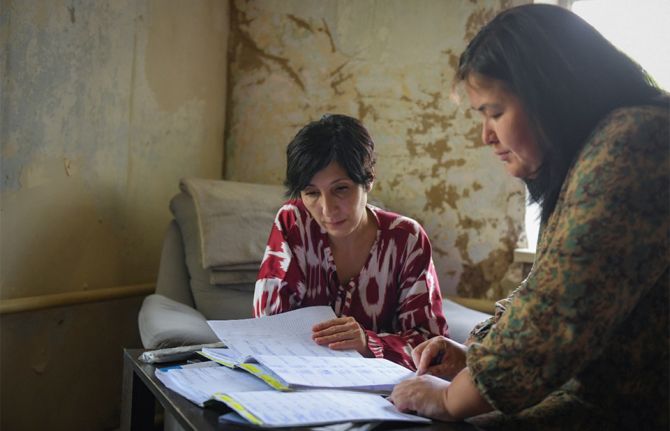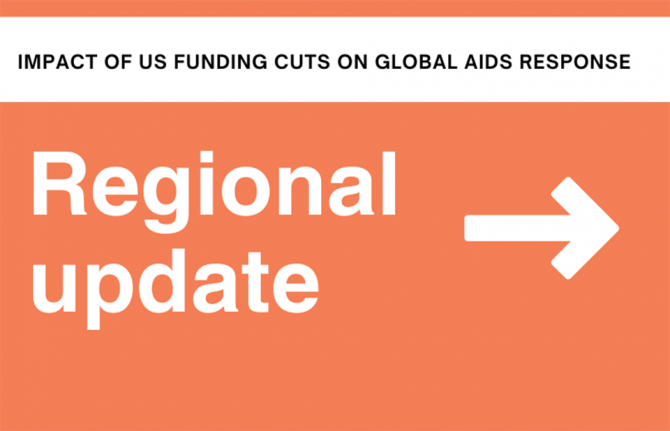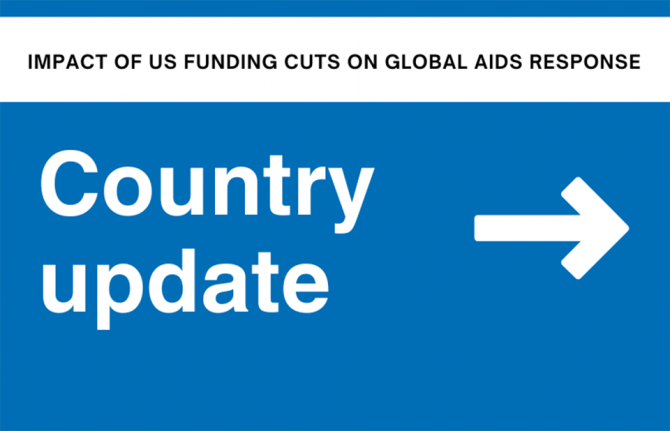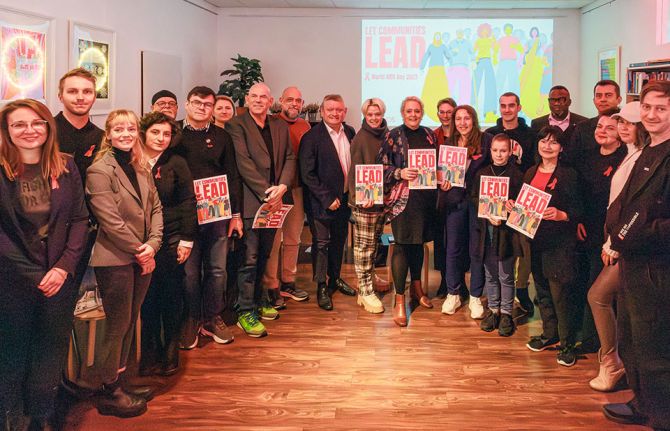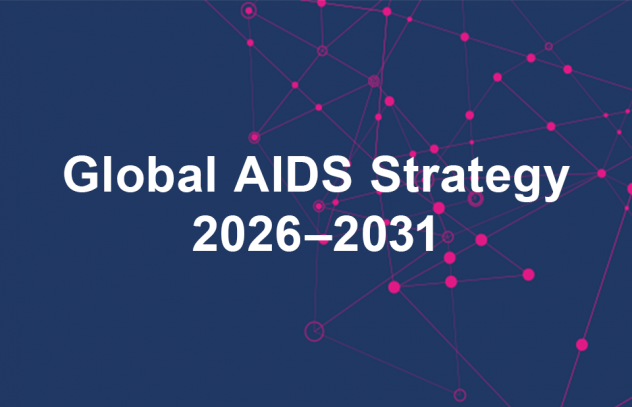
Feature Story
BBC News reports bone marrow 'cures HIV patient'
14 November 2008
14 November 2008 14 November 2008
BBC World Service
According to a BBC report on 13 November 2008, "Doctors in Germany say a patient appears to have been cured of HIV by a bone marrow transplant from a donor who had a genetic resistance to the virus."
UNAIDS Chief Scientific Adviser Dr Catherine Hankins spoke to the BBC Radio’s Julian Keane on “The World Today”.
Dr Hankins discussed what can be learned from a case like this and why it may be one more piece in the puzzle to discover why it is that some people don't get infected and or some who do get infected don't progress and get sick.
This interview was first broadcast on Thursday 13 November 2008.
BBC News reports bone marrow 'cures HIV patient'
Multimedia:
Interview with Dr Catherine Hankins, UNAIDS Chief Scientific Adviser with Julian Keane on “The World Today”.
Courtesy of BBC Radio World Service /
The World Today
External links:
Related
 An HIV vaccine: who needs it?
An HIV vaccine: who needs it?

21 July 2021
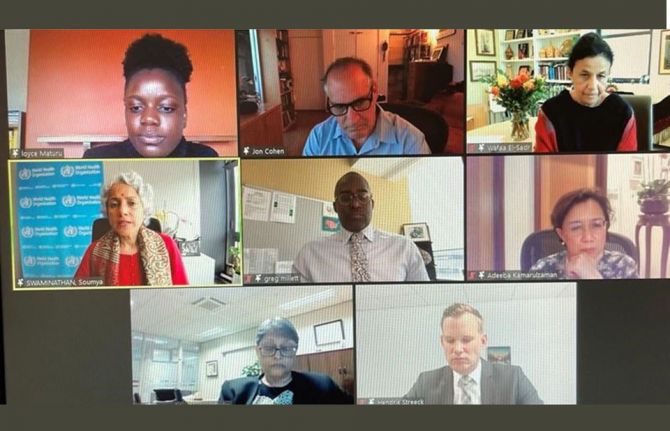 Science, HIV and COVID-19—where are we headed?
Science, HIV and COVID-19—where are we headed?

08 June 2021

Feature Story
New report on the State of the World Population
12 November 2008
12 November 2008 12 November 2008
Cultural sensitivity is critical for the success of development strategies according to a new report produced by the United Nations Population Fund (UNFPA). Credit UNFPA
Cultural sensitivity is critical for the success of development strategies according to a new report produced by the United Nations Population Fund (UNFPA). Reaching Common Ground: Culture, Gender and Human Rights, launched 12 November 2008, reports that culture is a central component of successful development of countries, and must be integrated into development policy and programming.
The State of World Population 2008 report affirms that development strategies that are sensitive to cultural values can reduce harmful practices against women and promote human rights, including gender equality and women’s empowerment.
Despite many declarations and affirmations in support of women’s rights, the report argues, gender inequality is widespread and deep-rooted in many cultures. Coercive power relations underlie practices such as child marriage - a leading cause of obstetric fistula and maternal death—and female genital mutilation or cutting. These and other harmful practices continue in many countries despite laws against them.
Gender inequality and HIV
The effects of gender inequality leave women and girls more at risk of exposure to HIV. Less access to education and economic opportunities results in women being more dependent on men in their relationships, and many who have no means of support must resort to bartering or selling sex to support themselves and their children. Where women can’t own property and lack legal protections, their dependence within their families is even greater. Economic and social dependence on men often limits women's power to refuse sex or to negotiate the use of condoms.
The report, which coincides with this year’s 60th anniversary of the Universal Declaration of Human Rights, is based on the concept that the international human rights framework has universal validity. Human rights express values common to all cultures and protect groups as well as individuals. The report endorses culturally sensitive approaches to the promotion of human rights, in general, and women’s rights, in particular.
Culturally sensitive approaches call for familiarity with how cultures work, and how to work with them. The report suggests that partnerships - especially with community-based institutions and leaders - can create effective strategies to promote human rights and end their abuses, such as female genital mutilation or cutting, wife inheritance or rape within marriage.
“Communities have to look at their cultural values and practices and determine whether they impede or promote the realization of human rights. Then, they can build on the positive and change the negative,” said Thoraya Ahmed Obaid, Executive Director of UNFPA
Therefore, The State of World Population report cautions that cultural sensitivity and engagement do not mean acceptance of harmful traditional practices, or a free pass for human rights abuses. Values and practices that infringe human rights can be found in all cultures. Understanding cultural realities can reveal the most effective ways to challenge these harmful cultural practices and strengthen beneficial ones.
The report concludes that analysing people’s choices in their local conditions and cultural contexts is a precondition for better development policies.
New report on the State of the World Population
Cosponsors:
Press centre:
Press release
Press summary (pdf, 127 Kb)
Feature stories:
Uniting against female genital mutilation (04 March 2008)
Publications:
Reaching Common Ground: Culture, Gender and Human Rights - The State of World Population report 2008 (pdf, 2.46 Mb)
Youth Supplement (pdf, 3.03 Mb)
Eliminating Female genital mutilation. An interagency statement. (pdf, 3.4 Mb)

Feature Story
Police in India commit to support community AIDS responses
11 November 2008
11 November 2008 11 November 2008UNAIDS Executive Director Dr Peter Piot is visiting India this week. Thanks to government leadership, enhanced cooperation between civil society and the police could make a difference in communities across India.
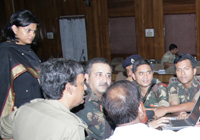
A group of police and paramilitary personnel and representatives from State AIDS Control Societies and civil societies make action plans for implementation at the State level and district level. Credit: UNAIDS
Although adult HIV prevalence rate in India is low at 0.3%, still an estimated 2.4 million people are living with HIV in this the second most populous country in the world. Those most at risk of contracting the virus are people who engage in certain behaviours including buying and selling sex, injecting drugs and men who have sex with men. A complex range of social issues means they can be the people hardest to reach in society.
As they may also be criminalized by the legal system, their paths often cross with the police. This contact presents a unique opportunity for the police to act as facilitators for the provision of HIV related services to people most-at-risk.
Safer sex and drug injecting
Safer sexual and injecting practices are vital for the successful control of the HIV epidemic in India. Most HIV outreach for marginalized people is led by non-governmental (NGOs) and community based organizations. Traditionally, the police force did not work formally with civil society in India, although there have been excellent examples of police men and women coordinating with NGOs but this was on an ad hoc and personal basis.
Through successful advocacy, UNAIDS in India has proposed to the Ministry of Home Affairs to consider the value of enhancing cooperation and proactive support between the police and the agencies working with people at higher risk of HIV. With support from the police, the protection of community workers, their outreach and successful implementation of measures like condom distribution and needle exchange programmes are more assured.
In December 2007 the Ministry of Home Affairs issued an official order to all Directors General of Police to designate a Nodal officer for NGO Coordination at the state and district level. This officer is specifically tasked with engaging more closely with NGOs.
This has already been fully implemented across India in all twenty-eight states and seven Union Territories and is already seen as a major contribution to National HIV programming. By engaging with the issue of HIV and supporting prevention initiatives as part of their regular work, the police will automatically get sensitized for their own protection from the risk of HIV infection.
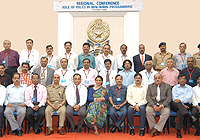
Nodal officers in charge of NGO coordination at the State and district level took part in a regional police conference on the role of police in HIV programming and formulated action plans. 7 August 2008 Credit: UNAIDS
“The Ministry of Home Affairs, Government of India has shown an extraordinary commitment to respond to HIV by introducing this unique intervention. At almost no cost, this ensures long term coordination between police and civil society in an institutionalized manner for supporting communities with prevention, treatment, care and support services and in achieving the targets of universal access,” said Mr Ranjan Dwivedi, Technical Advisor, Uniformed services and Civil Society partnerships, UNAIDS India.
This intervention by the Ministry removes the administrative cost of setting up initiatives by officers locally. As well as demonstrating the positive contribution of the police, community groups hope the measure will go a long way in assisting NGOs, not only in HIV prevention, but in other social programmes such as in the response to child abuse and violence against women.
Beyond law enforcement to proactive community support
Recently the Ministry of Home Affairs, in partnership with UNAIDS, organized four regional conferences for the newly identified nodal officers for NGO Coordination who would facilitate in rolling out of the strategy for HIV programming for uniformed services in all states. The events were an opportunity to sensitize the state police leadership as well as representatives from health departments and State AIDS control societies to plan HIV prevention initiatives in police departments together through new strategies evolved by the Ministry Of Home Affairs.
The role of the police to proactively support agencies working with most-at-risk populations was underlined, as well as their sensitive role in HIV prevention among people who buy and sell sex, inject drugs or men who have sex with other men.
Enhancing relations with the police
The community based organizations present emphasized the importance of police support in their local outreach efforts.
Kusum Jain from Gram Bharati Samiti (GBS), an NGO in Rajasthan, works closely with Rajput tribal community who by tradition practice sex work. When her organization first began to interact with the community they were chased with dogs as the people thought they had come to stop their business. With help from the local police, GBS workers over the years have built up the trust of the community who now see their only aim is to make them aware of HIV prevention that now they can work closely together.
Ms Jain believes that formalizing the role of the police in community support has enhanced their relations with the police, helping the police to be accessible and provide proactive support to agencies working on HIV prevention among most at risk populations.
A recent Asia Commission report concluded there is a vital need for political engagement and support to drive an effective AIDS response. Through this new initiative with the police, the Indian government is demonstrating such leadership.
Police in India commit to support community AIDS
Feature stories:
President of India unites for children (30 October 2007)
2.5 million people living with HIV in India (06 July 2007)
India: Driving forward an effective AIDS response (22 June 2007)
Multimedia:
View photo gallery of UNAIDS Executive Director's official visit to India
Publications:
Redefining AIDS in Asia: Crafting an effective response (pdf, 1.6 Mb)
Related

Feature Story
Reporting HIV estimates
10 November 2008
10 November 2008 10 November 2008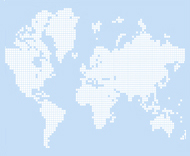
UNAIDS/WHO plan to publish an AIDS Epidemic Update in 2009 that will report on 2008 estimates, incorporating the 2008 programme coverage data.
For more than a decade, the Joint United Nations Programme on HIV/AIDS (UNAIDS) and the World Health Organization (WHO), have produced a detailed report titled “AIDS Epidemic Update” prior to World AIDS Day that provided the most recent epidemiological figures and trends for the current year.
However the estimates of new HIV infections, deaths due to AIDS, and number of people living with HIV are now more and more affected by information coming from HIV services including HIV treatment coverage and prevention of mother to child transmission programmes. This information is usually made available after the year ends, meaning that it is no longer possible to provide credible estimates of a current year.
So this year it has been decided not to publish a new “AIDS Epidemic Update” in 2008. Instead UNAIDS/WHO plan to publish an AIDS Epidemic Update in 2009 that will report on 2008 estimates, incorporating the 2008 programme coverage data.
This change in reporting cycle was endorsed by leading epidemiologists during the International Consultation on Epidemiological Estimates organised by UNAIDS in November 2007.
For epidemiological information about the AIDS epidemic, please refer to UNAIDS’ Report on the global AIDS epidemic 2008.
Reporting HIV estimates
Publications:
Fact sheet: Global facts and figures (August 2008)
UNAIDS backgrounder on methodology: Understanding the latest estimates of the global AIDS epidemic (July 2008)
Related
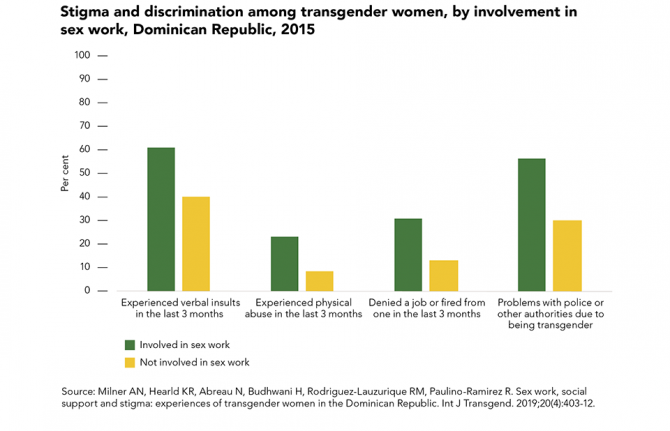 Transgender sex workers face frequent abuse
Transgender sex workers face frequent abuse

29 March 2022

Feature Story
First Summit of Global Agenda Councils
07 November 2008
07 November 2008 07 November 2008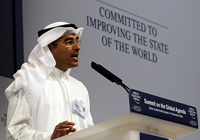
Mohamed Alabbar, Chairman, Emaar Properties and co-chair of the Summit on the Global Agenda, speaking at the Introductory Session of the Summit on the Global Agenda, 07 November - 09 November 2008. Copyright World Economic Forum/Photo by Dana Smillie.
The World Economic Forum's first Summit of the Global Agenda Councils - a unique gathering of leaders from academia, business, government and civil society – is taking place in Dubai, United Arab Emirates from 7 to 9 November. UNAIDS Executive Director Dr. Peter Piot is in Dubai participating in this event.
The Summit aims to advance solutions to the world’s most critical challenges; the Forum’s new Global Agenda Council is being billed as the world’s foremost intelligence and knowledge network.
Over the coming days, Dr. Piot, in his role as Chairman of the Global Agenda Council for HIV/AIDS, will participate in several workshops and sessions where discussions will be held on how to improve the state of the world, highlighting specific issues including HIV, systemic financial risk, global governance, energy security, child welfare, climate change and food security. Further issues under discussion will be actions and actors in these areas; presentation of key insights from the Councils discussions; and decisions on next steps for the Councils.
The outcomes of this Summit will be presented for further discussion and action at the World Economic Forum’s upcoming Annual Meeting 2009 in Davos, Switzerland.
First Summit of Global Agenda Councils
Multimedia:
External links:
Summit on the Global Agenda web site
Network of Global Agenda Councils
Description of issues covered by the Global Agenda Councils (pdf, 228 Kb)
Discussion Highlights - Health
Publications:
Global Agenda Councils report on AIDS (pdf, 13.8 Kb)
Related

Feature Story
Building on experience to scale up HIV services
06 November 2008
06 November 2008 06 November 2008
More than 30 representatives from 10 countries of the Commonwealth of Independent States (CIS), along with UNAIDS representatives, took part in the meeting of the CIS Coordination Council on HIV/AIDS on 30 October in Moscow
More than 30 representatives from 10 countries of the Commonwealth of Independent States (CIS), along with UNAIDS representatives, took part in the meeting of the CIS Coordination Council on HIV/AIDS on 30 October in Moscow. The meeting, hosted by the Russian Government, brought together government representatives, country and regional civil society leaders and members of the Eastern European and Central Asian Union of the Organizations of People Living with HIV to build on their experiences to scale up HIV prevention, treatment, care and support.
“It is a truly unique meeting not only for the country but the region as a whole”, said Dr Luiz Loures, Director of the UNAIDS Strategic Country Intelligence Office In his remarks opening the consultation. “The urgent need to provide universal access to HIV services emphasizes the importance of improved coordination and harmonization of our efforts. That is why the CIS as a regional platform for coordination is so essential for that to happen in this region.”
The number of people living with HIV in the CIS countries rose in 2007 to an estimated 1.6 million, with an estimated 150,000 new HIV infections. This represents a 150% increase since 2001.
The HIV epidemics in the CIS area are concentrated mainly among injecting drug users (IDU), sex workers, their respective sexual partners and, to a lesser extent, men who have sex with men (MSM). Of the new HIV cases reported in 2006, for which there was information on the mode of transmission, nearly two thirds (62%) were attributed to IDUs and more than one third (37%) to unprotected heterosexual intercourse.
In light of the regional data that identifies drug use as a major driver of the epidemic in the region, all participants agreed on the urgent need to remove stigmatizing and coercive measures, and training of health providers and law enforcement personnel to be able to work effectively with IDUs in reducing the spread of HIV. So far, the percentage of injecting drug users reached by prevention programmes such as needles/syringe exchange remains small, in spite of increased funding overall.
Less than 1% of new HIV diagnoses across the region were among men who have sex with men, although the real extent to which sex between men features in some of the region’s epidemics is unknown. Deep-rooted stigma and discrimination, growing xenophobia and homophobia are major barriers to the AIDS response. This is driving the epidemic underground as people are afraid to access HIV services
The reasons behind such trends noted at the meeting comprise not only resource and capacity deficits, but also the lack of broad leadership and partnership for AIDS, including at the highest levels of governments and communities. Such partnerships would link more closely decision makers with those who have first-hand experience of AIDS realities on the ground.
Therefore, countries recognized the importance of promoting information sharing between them on issues related to the protection of human rights, promotion of effective programmatic approaches and regionally relevant best practices.
While discussing the 2009-2013 Joint CIS Programme on AIDS participants also made a strong case for mobilization of additional funds to sup¬plement the resources available through the extension of existing grants and loans provided by the Global Fund, the World Bank and other donors.
Finally, in order to guarantee the provision of universal access to HIV services in the region, participants identified the need for the development of a regional policy to en¬able proactive price negotiations for medical and laboratory commodities as well as to improve utilization of the existing regional training facilities to enhance technical capacity in the countries.
As Dr Sergei Furgal, Director, a.i., UNAIDS Regional Support Team for Eastern Europe and Central Asia, noted, “The Joint CIS Programme is based on the outcomes and recommendations of the UNAIDS-facilitated regional consultations on Universal Access as well as on the principles of hori¬zontal collaboration between the CIS countries. Regional team has been providing a substantial and solid support to the CIS as a key intergovernmental regional body in strengthening and consolidating response to AIDS.”
The next meeting of the CIS Coordination Council on HIV/AIDS is scheduled on February 2009. It will aim at reviewing regional progress and obstacles in scaling up HIV prevention, treatment, care and support towards the Universal Access targets and to develop a special regional pro¬gramme to tackle AIDS among labour migrants.
Building on experience to scale up HIV services
Feature stories:
Lars Kallings: UN Special Envoy for AIDS in Eastern Europe and Central Asia (20 Oct 2008)
HIV prevention and the uniformed services in CIS (08 Oct 2008)
Publications:
AIDS in the Commonwealth of Independent States - 2008 MAP Report (pdf, 8.8 Mb)
Related

Feature Story
UNAIDS and KfW Entwicklungsbank renew cooperation agreement
06 November 2008
06 November 2008 06 November 2008
UNAIDS and KfW Entwicklungsbank (KfW) have entered into a new agreement to expand the reach of its cooperation
Four years after signing the first cooperation agreement to support the AIDS response in Central America and the Caribbean, UNAIDS and KfW Entwicklungsbank (KfW) have entered into a new agreement to expand the reach of its cooperation to include parts of Africa.
The first agreement between UNAIDS and KfW – which finances development programmes on behalf of the German Federal Ministry for Economic Cooperation and Development (BMZ) – was signed in July 2004 and focused on strengthening HIV prevention efforts in several Central American and Caribbean countries, such as Honduras, El Salvador, Guatemala, Dominican Republic, Haiti, and Guyana. Initiatives included the distribution of affordable condoms and social marketing campaigns to promote behaviour change.
Through the cooperation, in 2006 alone, more than 20 million subsidized condoms were distributed and sold in the region. In addition, condom social marketing programmes have reached an estimated 750,000 people, mainly groups most at risk of HIV infection.
The renewal, which runs from 2008 to 2011, will broaden efforts to address HIV prevention and reproductive health in West and Central Africa.
“Our first cooperation agreement enabled UNAIDS and KfW to provide access to quality, affordable condoms and to promote HIV awareness through various campaigns – prevention efforts that made a difference in the countries where we worked,” said UNAIDS Deputy Executive Director Michel Sidibe.
In the spirit of the previous framework, UNAIDS will continue to provide technical guidance for the initiatives and facilitate coordination among various stakeholders. KfW will further strengthen regional initiatives and enforce the regular information transfer between all parties. Jointly with UNAIDS, KfW will foster monitoring of the initiatives to improve transparency and detect opportunities and challenges.
“Enhancing the cooperation between UNAIDS and KfW Entwicklungsbank makes sense, as Africa is the continent that is by far the most affected by the epidemic,” said KfW’s Bruno Wenn, Senior Vice President Sub-Saharan Africa. “The activities by UNAIDS and KfW will increase the effectiveness of the AIDS response in Africa and elsewhere”.
About KfW
The German Development Bank finances development programmes in partner countries and regions on behalf of the German Federal Ministry for Economic Cooperation and Development. Between 2001 and 2007, a total of EUR 443 million has been committed to activities focused on sexual and reproductive health and HIV prevention.
About UNAIDS
UNAIDS is an innovative joint venture of the United Nations, bringing together the efforts and resources of the UNAIDS Secretariat and ten UN system organizations in the AIDS response. The Secretariat headquarters is in Geneva, Switzerland—with staff on the ground in more than 80 countries. Coherent action on AIDS by the UN system is coordinated in countries through UN theme groups, and joint programmes on AIDS.
UNAIDS’ Cosponsors include UNHCR, UNICEF, WFP, UNDP, UNFPA, UNODC, ILO, UNESCO, WHO and the World Bank. Visit the UNAIDS Web site at www.unaids.org
UNAIDS and KfW Entwicklungsbank renew cooperation
External links:
Related

Feature Story
Focus on new HIV prevention technologies
05 November 2008
05 November 2008 05 November 2008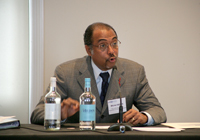
UNAIDS Deputy Executive Director Michel Sidibe addressed UK Department for International Development meeting “Joining forces in the development of new prevention technologies” London, 5 November 2008 Credit: Rolf Marriott
HIV prevention was the focus of a meeting organized by the UK Department for International Development (DFID) on 4 November in London. Politicians, scientists, international organizations and civil society members gathered to evaluate current HIV prevention strategies and to join forces in the development of new prevention technologies.
UNAIDS Deputy Executive Director Michel Sidibe took part in the meeting where he addressed participants on the challenges faced in responding to the AIDS epidemic, the need for combination prevention along with the development of new prevention tools.
As stated in the UNAIDS 2008 Report on the global AIDS epidemic, there have been significant gains in preventing new HIV infections in a number of heavily affected countries, however the AIDS epidemic is not over in any part of the world. In fact, 2.7 million new infections occurred in 2007. “The reality is we are still far from where we need to be in coverage of proven HIV prevention tools,” Mr Sidibe noted.
Less than 40% of young people globally have correct basic knowledge about HIV, only a third of HIV-positive pregnant women receive antiretrovirals to prevent HIV transmission to their new-born babies and a minority of the most at risk groups have access to HIV prevention programmes.
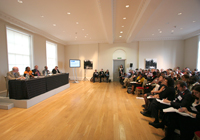
Audience at UK Department for International Development meeting “Joining forces in the development of new prevention technologies.” London, 5 November 2008 Credit: Rolf Marriott
There was a general agreement among meeting participants that current HIV prevention programmes need to be scaled up and improved. Furthermore, need for further scientific research to accelerate the development and delivery of new HIV prevention tools as an important part of the global AIDS response was emphasised.
New HIV prevention technologies such as vaccines, microbicides and other technologies could play a critical role in reversing the current trends in HIV transmission rates. Its development however will require a global partnership between a range of organizations across a number of sectors, including scientists, private sector, communities and governments.
According to Mr Sidibe, there are three crucial elements which will determine the success in advancing the development of new prevention technologies. First: convening the right actors. Second: developing the right financial architecture. And, third: delivering new technologies as part of a strategy of combination prevention.
“If the 21st century is to be the century of biology, let us make HIV vaccine its first great triumph. The world needs an HIV vaccine,” said UNAIDS Deputy Executive Director Michel Sidibe.
Focus on new HIV prevention technologies
Related

Feature Story
Advancing the health systems strengthening debate
04 November 2008
04 November 2008 04 November 2008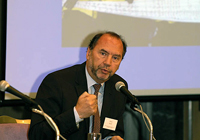
UNAIDS Executive Director Dr Peter Piot speaking at a session on the role of major stakeholders in strengthening health systems. Credit: JCIE
Representatives from G8 and non-G8 countries, international organizations, foundations and civil society are in Tokyo, Japan to further health systems strengthening. The International Conference on Global Action for Health System Strengthening took place from 3-4 November as a follow-up to the July 2008 Toyako G8 Summit. The conference aims to keep global health high on the agenda of G8 leaders and to develop a coordinated framework to better align global health initiatives.
On 3 November UNAIDS Executive Director Dr Peter Piot spoke at a session on the role of major stakeholders in strengthening health systems. In his presentation, Dr Piot elaborated on the impact of AIDS – and other disease specific programmes – on health systems in low- and middle-income countries. Dr Piot outlined how the AIDS response has bolstered weak health systems, such as through the provision of essential treatment, care and support services for people living with HIV. During his intervention, Dr Piot also underlined the need to improve coordination among international health partners, make existing money work more effectively, and secure predictable long-term funding.
One of the major constraints to addressing both the AIDS epidemic and global access to essential health care services is the serious shortage of healthcare workers. Insufficient healthcare workforce is the primary obstacle to the delivery of antiretroviral treatment and other HIV-related services in many countries in Eastern Europe, Africa and Asia. Many healthcare systems have poor availability and quality of pre- and post-test counselling, health education, home care, diagnosis and treatment of opportunistic infections.
The need for an active and more coordinated compilation of health information as well as the importance of sustainability and predictability of funding were also identified as two major areas for improvement in order to strengthen health systems worldwide. There is a need for a better global data monitoring that in turn will allow for a more effective use of the existing resources.
As the current holder of the G8 presidency, Japan continues to place health systems strengthening high on the agenda. It has encouraged the other member nations to provide full support in realizing greater action on the issue through the hosting of several high level meetings and formation of working groups to address priority areas of the health systems debate such as financing, information and data collection, and the workforce.
Japan has committed to ensuring a smooth transition of the health systems dossier to the next holder of the G8 presidency – Italy in 2009.
Advancing the health systems strengthening debate
Cosponsors:
Feature stories:
Health workforce crisis limits AIDS response (29 february 2008)
External links:
G8 Hokkaido Toyako Summit web site
Japan Center for International Exchange (JCIE)

Feature Story
UNAIDS: The First 10 Years
03 November 2008
03 November 2008 03 November 2008The Joint United Nations Programme on HIV/AIDS (UNAIDS) was launched in 1996 to strengthen the way in which the UN was responding to AIDS. UNAIDS: The First 10 Years is a new publication that presents a multifaceted account of the history of UNAIDS based on multiple subjective views.
The history, written by Lindsay Knight, relates the struggles and achievements of this relatively young organization and the contribution it has made to the AIDS response.
More than 150 people were interviewed and the book is largely based on their accounts. They reflect on how the Secretariat engages the efforts of many sectors and partners from the UN system, government and civil society.
It describes the successes that UNAIDS and its partners made on different fronts – advocacy, fundraising, prevention, treatment. It also attempts to explain the innovative nature of UNAIDS – a joint programme that has brought together a number of cosponsoring UN organizations (originally six now ten).
The publication also looks at the challenges the world still faces if the epidemic is to be reversed. These include sustained leadership, coordination action in countries, “making the money work” and the need to tackle the drivers of the epidemic which include the development issues of poverty and inequality as well as stigma.
UNAIDS: The First 10 Years
Publications:
UNAIDS: The First 10 Years (pdf version, 5.7 Mb)
Related
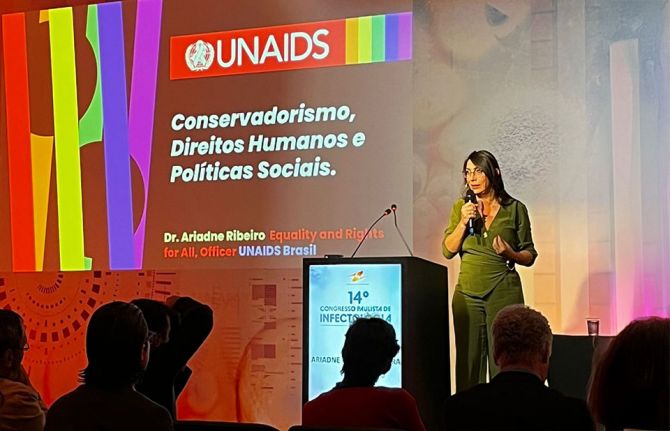 Upholding dignity for everyone: Ariadne Ribeiro Ferreira
Upholding dignity for everyone: Ariadne Ribeiro Ferreira

21 November 2024

